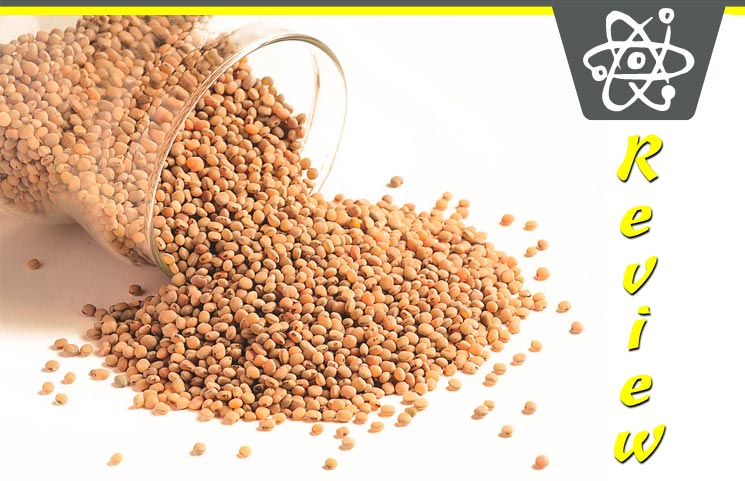Sorghum Guide
Sorghum is a gluten-free grain commonly grown in warm climates of the world. Today, it’s becoming popular for its health benefits and impressive nutrient profile. Find out everything you need to know about Sorghum today in our guide.
What is Sorghum?
Sorghum is a grain that has been grown for thousands of years. It has only recently become popular, however, due to its gluten-free status and powerful nutritional profile.
The first sorghum crops were grown in Africa about 5000 years ago. Today, Africa is one of the world’s leading sorghum producers. The crop is also popular in India, where it’s known as jowar. Other civilizations call it milo.
The world’s biggest sorghum producer, however, is the United States. In the US, sorghum is primarily used for animal feed. Thanks to the recent popularity of the gluten-free diet, however, more and more sorghum producers are using it for human food or in gluten-free beer.
Protein and Sorghum
Sorghum contains protein, although it’s considered an incomplete source of protein (like corn) because it does not contain sufficient levels of lysine, which is an important amino acid of protein. Your body uses lysine to grow muscles, promote healthy bone development, and convert fats into energy.
The incomplete protein content in sorghum is actually one of its most important flaws. In Africa and other developing parts of the world, where people don’t get enough meat, they cannot get sufficient protein just from sorghum. In developed countries, however, where it’s easier to get lysine from other sources, this typically isn’t an issue.
How to Use Sorghum
Sorghum is popular to use in gluten-free recipes. You can blend sorghum with gluten-free flours, starches, and leavening agents.
Some people recommend adding extra oil, fat, or eggs to your sorghum recipes in order to improve the moisture content and texture.
Most people describe sorghum as having a “unique” flavor. It’s often found in the form of sorghum sweeteners, like syrups and molasses. These flavors are particularly popular in the southern United States, and many members of the older generation who grew up in the United States have nostalgic memories of the sweet taste of sorghum growing up.
Two of the most popular ways to use sorghum include popping it like a popcorn or cooking it into risotto.
Some microbreweries are even taking things a step further and producing gluten-free beer using sorghum.
Types of Sorghum
There are three main varieties of sorghum, including:
— Grain Sorghum: Grain sorghum is typically referred to as “milo”. It’s a taller plant that gets covered with smaller, rounder seeds late in the summer. Milo is commonly used to mill fresh flour, although some people also pop it like popcorn. When US producers create sorghum for animal feed, they typically use grain sorghum.
— Sweet Sorghum: Sweet sorghum, as the name suggests, is the sweetest variety of the plant. It’s often grown to create sweet juice, which is then extracted from the tall stalks.
— Broom Corn: Broom corn is the sturdiest and tallest variety of sorghum. It holds its seeds on study straws. These straws are so sturdy that they’re often used in brooms, which gives broom corn its name.
How to Grow Sorghum
Sorghum is grown in a similar way to corn. Here’s what you need to know to grow sorghum:
— The plant needs warm soil to germinate and grow. Even in warm climates, it’s not typically planted until late May or early June.
— The best sorghum soil is a balanced organic fertilizer. Sorghum will self-fertilize (unlike corn), so you don’t need to create a large plot.
— Seeds should be sown one half-inch deep and 4 inches apart. Once the seedlings are 4 inches tall, thin the crop to 8 inches apart.
— The plants will typically grow to about 5 feet in height, although certain varieties of broom corn and sweet sorghum can grow as tall as 8 feet.
— Some sorghum growers recommend drenching the crop with a high-nitrogen liquid fertilizer six weeks after planting to rejuvenate growth.
— Harvesting times vary according to which variety of sorghum you’re growing. With sweet sorghum, you harvest it about 2 weeks after the milking stage, which is when a pierced kernel of sorghum will release a light green juice. The seeds aren’t fully mature at this point. With grain sorghum and broom corn, however, you wait until the seeds are fully mature and have hard, glossy seed coats. Then, you cut the seed clusters along with a few inches of their stalk and leave them in a warm, well-ventilated environment for a week.
Whether you’re following the gluten-free lifestyle or just interested in adding something new to your diet, sorghum has suddenly exploded with popularity across the world.









